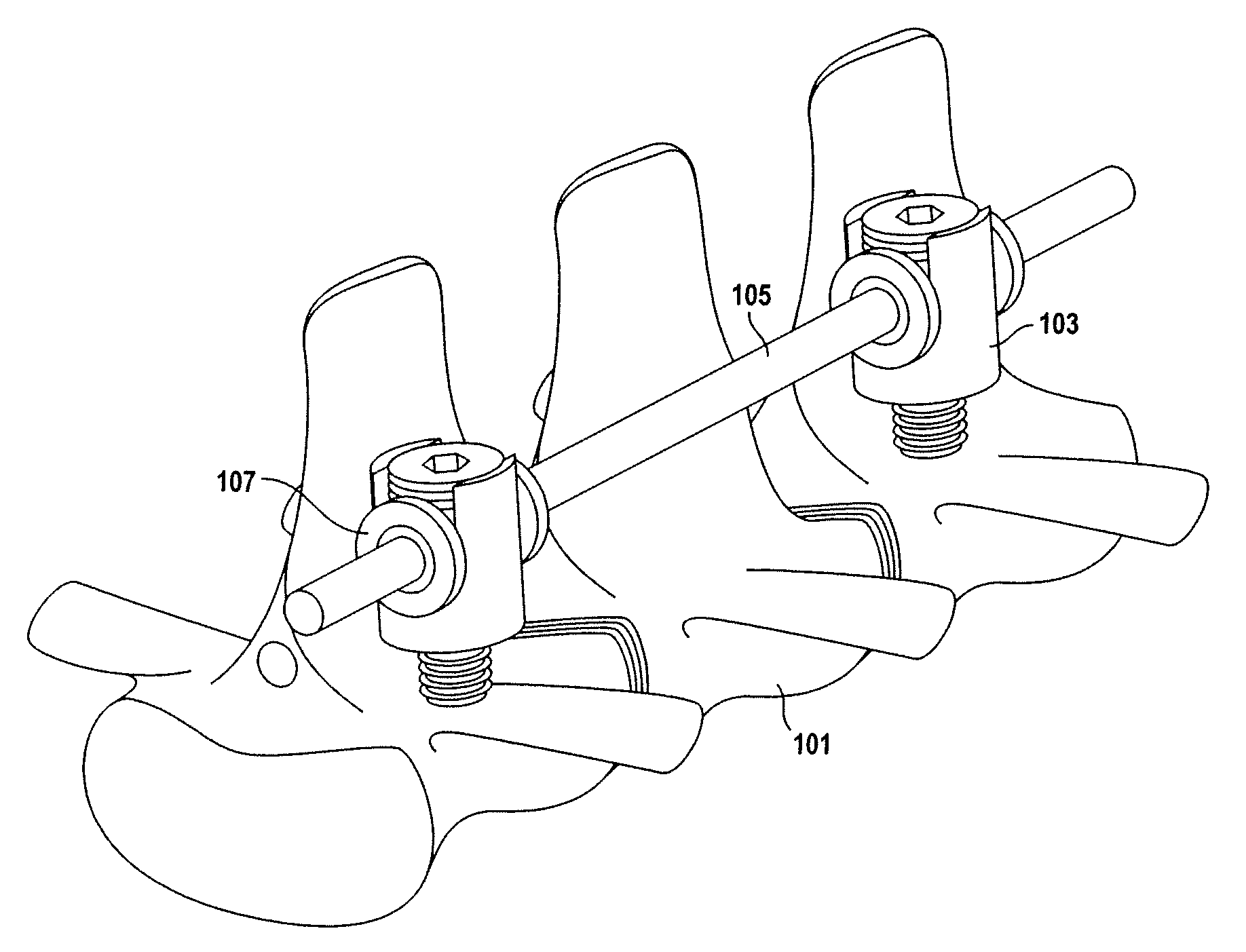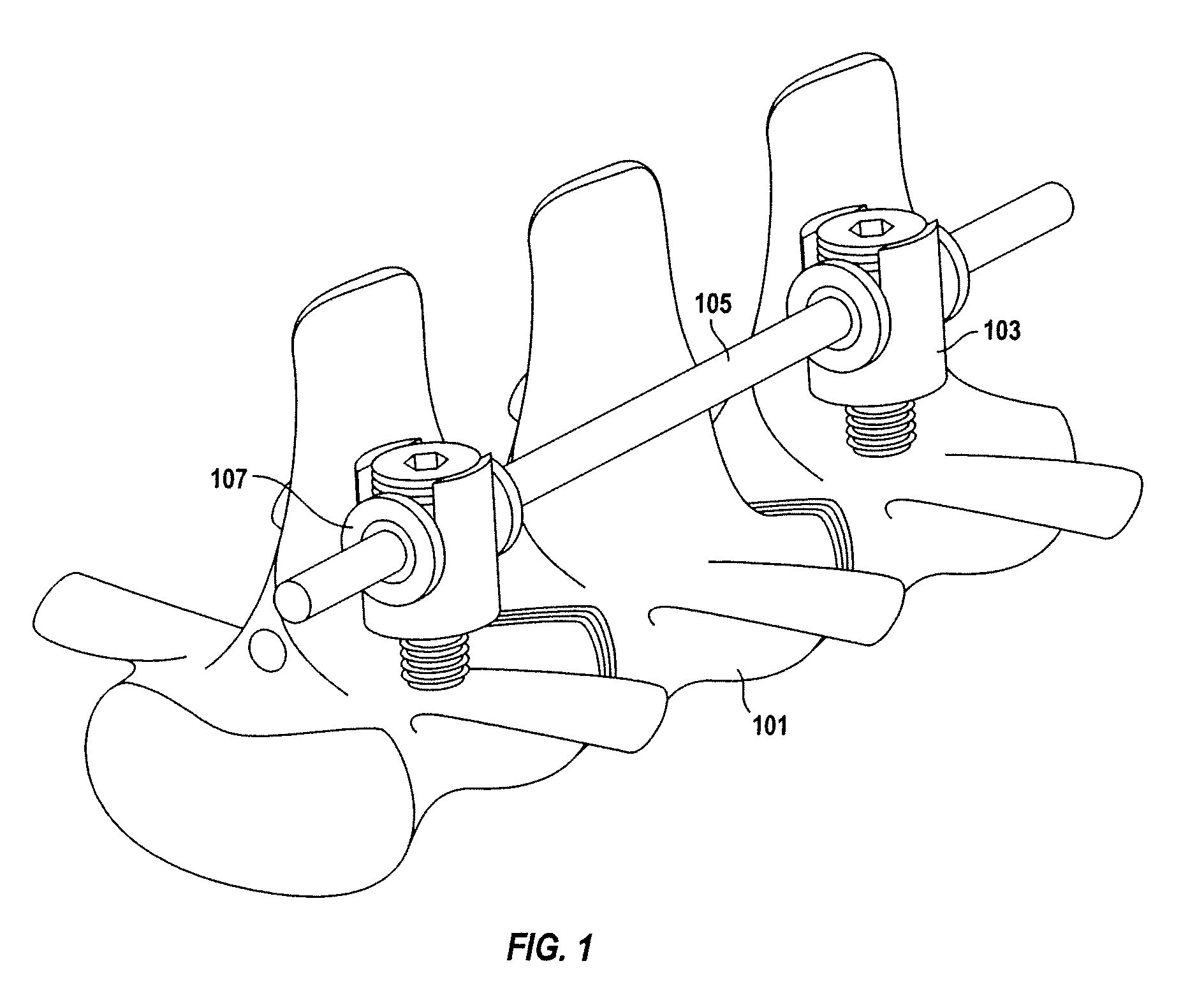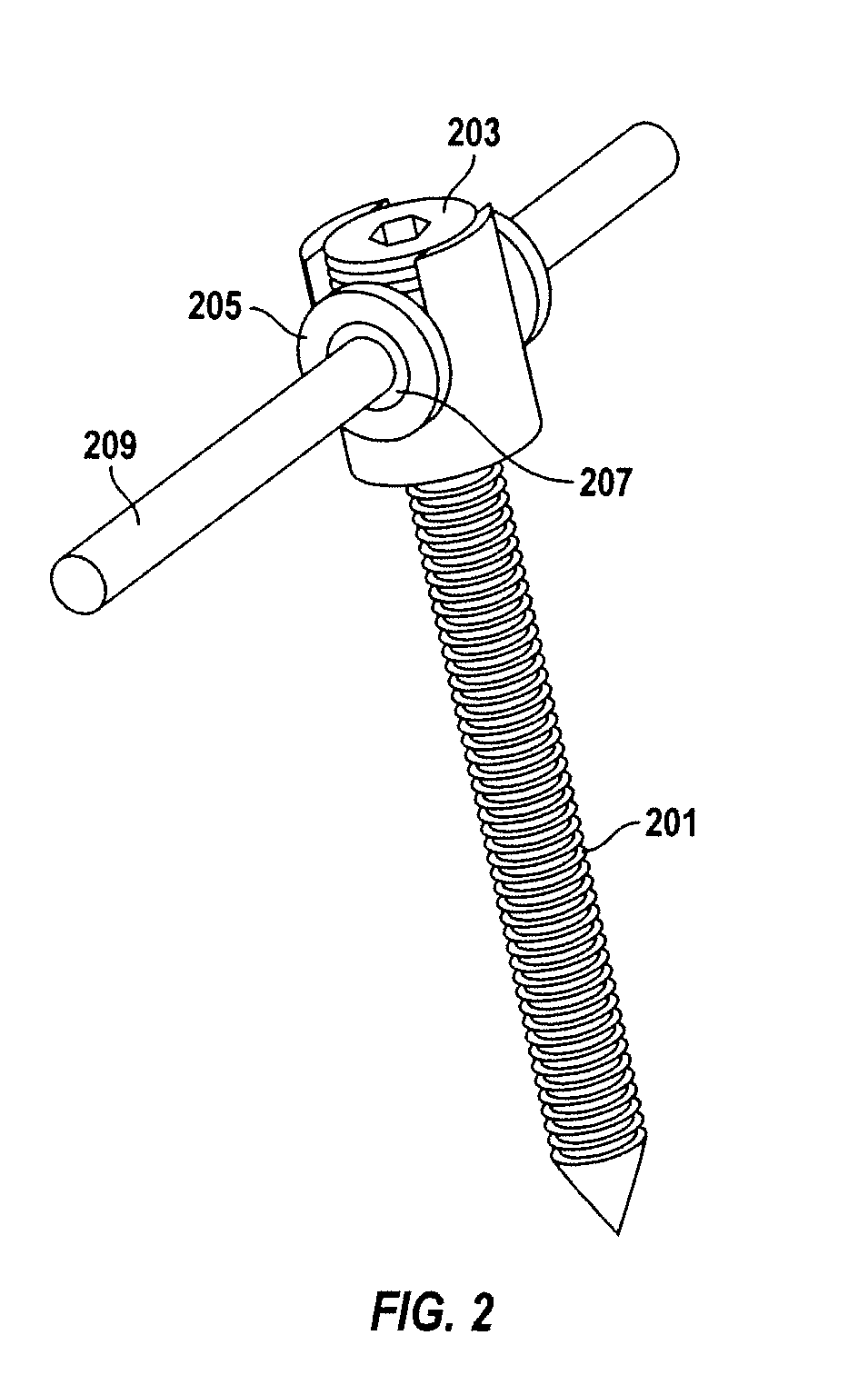Dynamic spinal deformity correction
a spinal deformity and dynamic technology, applied in the field of dynamic stabilization techniques, can solve the problems of significant invasiveness of the transverse process, requiring the application of bone graphs, and requiring permanent fixation of supporting clamps, and achieve the effect of full flexion and extension
- Summary
- Abstract
- Description
- Claims
- Application Information
AI Technical Summary
Benefits of technology
Problems solved by technology
Method used
Image
Examples
Embodiment Construction
[0028]Turning first to FIG. 1, spine 101 is shown instrumented with pedicle screws 103. Installed in each pedicle screw is rod adapter 107. Elastic or super elastic corrective rods 105 are caused to pass through each rod adapter noting that the rod adapter freely allows axial translation of the corrective rods. The goal of this device is to transfer forces from the corrective rods to the vertebrae and spine through existing and available fixation devices while providing full flexion and extension in the spine's coronal and saggital planes, thus minimizing if not completely eliminating the possibility of spinal fusion. As will be more readily apparent in the discussion which follows, the present invention adapts to existing and available fixation systems using elastic or super elastic correction rods to slowly correct deformities without fusion while retaining full range of motion and full flexion and extension in the spine's coronal and saggital planes.
[0029]Rod adapter 107 can be s...
PUM
 Login to View More
Login to View More Abstract
Description
Claims
Application Information
 Login to View More
Login to View More - R&D
- Intellectual Property
- Life Sciences
- Materials
- Tech Scout
- Unparalleled Data Quality
- Higher Quality Content
- 60% Fewer Hallucinations
Browse by: Latest US Patents, China's latest patents, Technical Efficacy Thesaurus, Application Domain, Technology Topic, Popular Technical Reports.
© 2025 PatSnap. All rights reserved.Legal|Privacy policy|Modern Slavery Act Transparency Statement|Sitemap|About US| Contact US: help@patsnap.com



